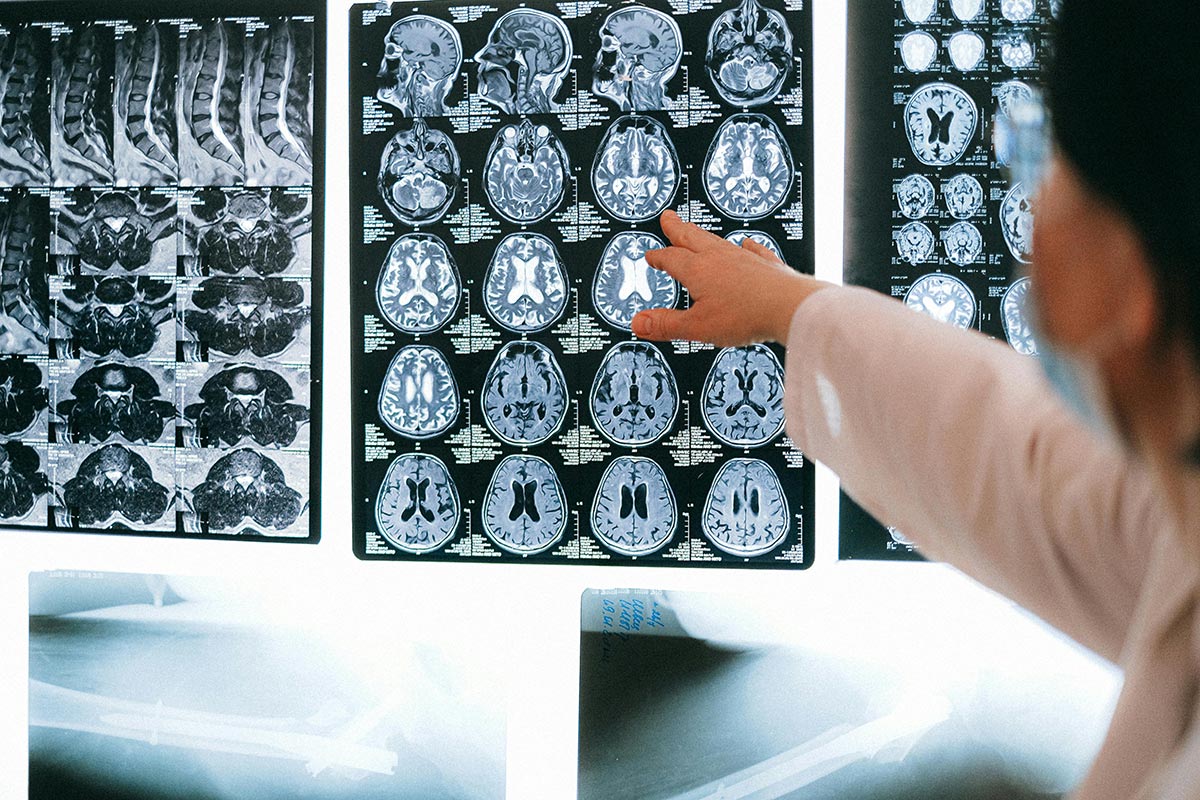
Addiction and Workplace Impact
The impact of addiction on the workplace is significant, influencing productivity, safety, and overall financial health of both employees and employers.
Drug Overdose Statistics
Recent data highlights the concerning rise in drug-related fatalities in the workplace. In 2020, unintentional drug overdoses from nonmedical use of drugs accounted for 388 workplace deaths, marking an increase of almost 500% since 2012. This alarming trend underscores the critical need for addressing substance misuse in professional environments.
| Year | Workplace Drug Overdose Deaths |
|---|---|
| 2012 | 65 |
| 2020 | 388 |
Industry's Drug Use Rates
Different industries report varying rates of substance use disorders among their workers. In 2020, the accommodation and food services industries exhibited the highest rates of illegal drug use and substance use disorders. Such industries face unique challenges due to high-pressure environments and varying employee demographics.
| Industry | Substance Use Disorders Rate |
|---|---|
| Accommodation & Food Services | Highest rates |
| Construction | Moderate |
| Manufacturing | Lower |
Substance misuse problems related to alcohol, illegal drugs, and prescribed medications cost the United States over $420 billion annually, with more than $120 billion attributed to healthcare expenses. Furthermore, the Centers for Disease Control and Prevention (CDC) estimates that binge drinking incurs approximately $249 billion each year in lost productivity, healthcare costs, law enforcement expenses, and motor vehicle accidents (PubMed Central).
Understanding the financial consequences of addiction is crucial for employers aiming to create safer, more efficient workplaces. Acknowledging and addressing these issues can lead to significant economic benefits and improvements in employee well-being. For more information on how addiction can impact finances, check out our article on how does addiction affect finances.
Addiction Among Specific Groups
Veterans and Substance Use
Addiction significantly affects specific groups, particularly veterans. Studies indicate that more than 1 in 10 veterans is diagnosed with a substance use disorder, which is higher than the general population. This issue is especially prevalent among males aged 18-25. American Addiction Centers demonstrate that the challenges faced upon returning to civilian life, including difficulty in readjustment and mental health issues, contribute to this higher rate of addiction.
The following table summarizes the percentage of veterans affected by different types of substance use:
| Substance Type | Percentage of Veterans Affected |
|---|---|
| Alcohol | 35% |
| Prescription Drugs | 25% |
| Illicit Drugs | 10% |
Given these statistics, it is crucial for society to recognize and address the unique needs of veterans suffering from addiction. Programs focused on rehabilitation and support are vital to assist these individuals in their recovery journey.
Military Personnel and Misuse
Active-duty military personnel also face significant challenges with substance misuse. Alcohol and prescription drugs, including opioid painkillers, are more commonly misused than illicit drugs among this population. According to American Addiction Centers, the stress of military life, including exposure to trauma, long deployments, and the pressures of combat, can lead to increased substance consumption as a coping mechanism.
The misuse of prescription opioids is a growing concern among military personnel, often prescribed to help manage chronic pain linked to injuries sustained during service. This pattern raises serious concerns about dependency and the financial consequences of addiction.
A summary of the substance misuse rates among military personnel is provided below:
| Substance Type | Misuse Rate (%) |
|---|---|
| Alcohol | 30% |
| Prescription Opioids | 25% |
| Other Illicit Drugs | 5% |
Addressing these issues through targeted addiction treatment programs is essential for supporting military personnel in overcoming substance misuse and the challenges that accompany it. For insights into overcoming addiction and its financial impacts, visit our page on addiction and financial problems and learn more about what is addiction treatment?.
Unemployment and Substance Abuse
The relationship between unemployment and substance abuse is a significant concern. Numerous studies indicate a strong correlation between job loss and the prevalence of substance use disorders (SUDs).
Substance Use Disorders Among Unemployed
Research has demonstrated significantly higher rates of SUDs among unemployed individuals compared to their employed counterparts. Unemployment is recognized as a risk factor for developing substance use disorders, including addiction to alcohol, tobacco, and illicit drugs. Those facing unemployment often experience heightened stress, which can lead to an increased likelihood of substance misuse.
| Prevalence of Substance Use Disorders | Employed Individuals | Unemployed Individuals |
|---|---|---|
| Alcohol Use | Lower Rate | Higher Rate |
| Tobacco Use | Lower Rate | Higher Rate |
| Illicit Drug Use | Lower Rate | Higher Rate |
Alcohol Misuse and Unemployment
Among the various substances, alcohol misuse is particularly prevalent in the unemployed population. Studies reveal that unemployed individuals exhibit higher rates of alcohol consumption and problematic drinking patterns (PubMed). Job loss can lead to increased feelings of isolation and despair, further exacerbating reliance on alcohol as a coping mechanism.
Job loss has also been linked to a higher risk of alcohol-related health problems, making it crucial to address this issue. Alcohol addiction can lead to severe financial consequences, impacting not only the individual but also their families and communities. For further insights into how addiction affects finances, visit our article on addiction and financial problems.
| Impact of Job Loss on Alcohol Use | Description |
|---|---|
| Increased Consumption | Higher levels of alcohol intake observed among unemployed individuals |
| Problematic Patterns | Greater likelihood of developing health-related issues due to alcohol misuse |
Understanding the dynamics between unemployment and substance abuse is essential for developing effective intervention strategies. Addressing these challenges can facilitate pathways to recovery and ultimately promote better mental health and financial stability. For more information on recovery options, visit our article on what is addiction treatment?.
Financial Consequences of Addiction
Addiction can have significant financial repercussions, affecting individuals and society at large. This section delves into the cost of substance misuse and the overall financial strain that addiction entails.
Cost of Substance Misuse
Substance misuse related to alcohol, illegal drugs, and prescription medications incurs substantial costs in the United States. According to a study, the total costs of substance misuse exceed $420 billion annually, with more than $120 billion allocated to healthcare expenses alone.
A breakdown of these costs includes:
| Cost Category | Annual Cost (in billions) |
|---|---|
| Total Substance Misuse Costs | $420 |
| Healthcare Expenses | $120 |
| Lost Productivity | $193 |
| Binge Drinking | $249 |
The economic burden arises from lost productivity due to addiction-related absenteeism and reduced effectiveness at work. Specifically, the Centers for Disease Control and Prevention (CDC) estimates that binge drinking alone costs the U.S. approximately $249 billion annually due to lost workplace productivity, healthcare expenses, law enforcement costs, and motor vehicle accidents (PubMed Central).
Financial Strain and Addiction
Long-term addiction can lead to various health problems such as chronic conditions, overdoses, and, in severe cases, death. These medical issues often result in hefty medical bills, particularly for those without insurance, which can exacerbate financial difficulties.
Additionally, individuals suffering from addiction may encounter legal issues, with costs including court fees and attorney expenses significantly adding to their financial burden. The combination of legal troubles and financial strain can result in long-lasting financial challenges (Banyan Treatment Center).
For individuals grappling with addiction, recognizing these economic ramifications is crucial. Understanding the financial consequences of addiction can lead to better decision-making regarding treatment and recovery options, highlighting the importance of investing in addiction treatment programs for a healthier future.
Job Loss and Addiction
Job loss significantly affects an individual’s mental and emotional state, often leading to increased vulnerability to substance use. The relationship between unemployment and addiction underscores some profound financial consequences of addiction.
Impact of Job Loss on Addiction
Research indicates that individuals who lose their jobs are at a higher risk of developing substance use disorders (SUDs), including addictions to alcohol, tobacco, and illicit drugs. Job loss is linked to various health issues, such as alcohol-related problems and increased likelihood of substance dependence. Unemployed individuals may turn to substances as a coping mechanism for stress and anxiety related to their job loss.
The following table summarizes the relationship between unemployment and substance use:
| Substance Type | Increased Risk Due to Unemployment |
|---|---|
| Alcohol | Higher risk of alcohol-related health issues |
| Tobacco | Increased use and reduced cessation success |
| Illicit Drugs | Elevated dependence and misuse rates |
Routine Disruption and Dependence
Loss of a job often leads to a lack of daily routine and structure, creating additional challenges for those at risk of addiction. With more free time and fewer responsibilities, many individuals may engage in substance misuse, fueling their dependence. This is especially true for those who are in the early stages of addiction. A disrupted routine can lead to reduced motivation to seek treatment or adhere to recovery programs (Gateway Foundation).
The absence of a structured environment often exacerbates addiction challenges. Individuals may experience an emptiness that can lead to increased substance use as a coping mechanism. Addressing this issue through support systems and treatment programs is crucial for those facing both unemployment and addiction. Seeking help from addiction treatment programs can provide individuals with essential tools and strategies to reclaim their lives and manage their addiction.
Seeking Help and Recovery
Addressing the financial consequences of addiction is critical for those affected. Seeking help through treatment programs can pave the way for recovery and eventually stabilize finances.
Addiction Treatment Programs
Addiction treatment programs are vital resources for individuals facing challenges related to substance misuse. These programs provide support, recovery tools, and guidance for re-entering the workforce with confidence. Services often include counseling, group therapy, and educational resources that help individuals navigate sober life while unemployed (Gateway Foundation).
Financial costs associated with addiction treatment can vary significantly based on the services required and the quality of care sought. Additionally, individuals may incur legal fees if their addiction leads to criminal activities, adding to the financial burden (BlueCrest Recovery Center).
Here’s a general overview of potential costs involved in addiction treatment:
| Treatment Type | Estimated Cost (per month) |
|---|---|
| Outpatient Programs | $1,000 - $3,000 |
| Inpatient Rehabilitation | $6,000 - $30,000 |
| Support Groups | Free - $100 |
| Legal Fees | $2,000 - $20,000 |
Support for Unemployed Individuals
Support for unemployed individuals dealing with addiction is equally important. Programs that integrate job training and recovery support can significantly aid recovery. These programs provide tools tailored to enhance skills and help individuals regain employment, which can alleviate the financial strain linked to addiction.
When struggling with addiction, many experience decreased productivity and income due to energy fluctuations, which can lead to job loss or reduced earnings for self-employed individuals. Addressing addiction effectively can improve overall stability and help fend off poverty.
Overall, seeking help through addiction treatment programs and support systems can provide pathways to recovery and financial stability for individuals impacted by addiction. For more detailed insights, check the following links: addiction and financial problems, how does addiction affect finances, and what is addiction treatment?.
.svg)





